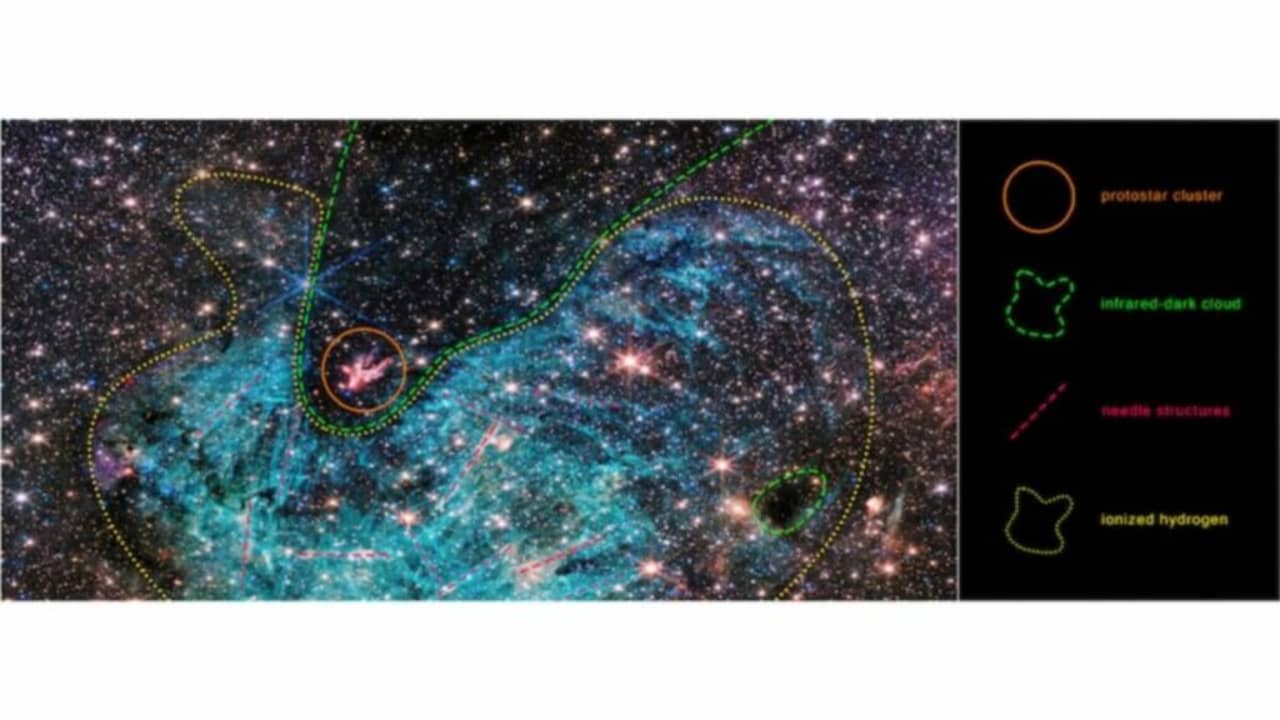It’s the most incredible construction by humans throughout their existence. A telescope of utmost precision traveling through space, sending back incredibly precise data and captures to Earth about planets, stars, and galaxies.
The James Webb Space Telescope observes some of the most distant galaxies in the universe. Now, it has looked inside our own.
Astronomers directed the James Webb, the most powerful telescope in space, towards a portion of the Milky Way’s core, capturing unprecedented detail of extreme movements and vigorous star formation.
Unlike the Hubble Telescope, which primarily observes visible light, the James Webb observes a type of light called infrared. These longer wavelengths penetrate through thick cosmic gas clouds, providing never-before-seen cosmic images.
This galactic area is called Sagittarius C (Sgr C), a region hosting intense star formation and located about 25,000 light-years from Earth, which is relatively close in cosmic terms.
For reference, one light-year equals 9 trillion kilometers. This is what is seen in the image captured by the Near-Infrared Camera (NIRCam) instrument of the Webb telescope (the second image is labeled).
- Half a million stars: “It is estimated that 500,000 stars shine in this image of the Sagittarius C region (Sgr C), along with some yet-to-be-identified features,” explains NASA.
- Cluster of protostars: In the center to the left, there is a bright pinkish amorphous shape. This is a cluster of protostars, which are stars in the process of formation.
- Vast chaotic gas region: The extensive region (about 25 light-years in diameter) colored in cyan is a type of hydrogen gas “containing needle-shaped structures lacking any uniform orientation,” said NASA. A future research question is to determine what drove the formation of this vast gaseous cloud.

The overlooked detail…
A crucial feature of the Milky Way’s core is missing here. At the center of most galaxies lies a supermassive black hole, and at the core of the Milky Way lies Sagittarius A.
It has the mass of about 4 million suns, although black holes can be much, much more massive.


